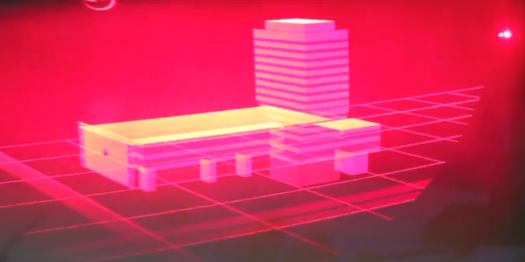Video: Spring-Loaded MEMS-Driven Pixels Could Enable 3-D Holographic Video Displays
Holographic video is sort of the holy grail of video display technology right now. Stereoscopic 3-D is fine and everything,...

Holographic video is sort of the holy grail of video display technology right now. Stereoscopic 3-D is fine and everything, but it basically works by tricking the brain into seeing that 3-D depth via two offset 2-D images–hence the occasional headaches associated with current commercial 3-D displays. Holographic video, by contrast, creates images that are really three-dimensional, no glasses or headaches required. And while high-quality holographic vid is still out of reach, researchers in Belgium think they can get us there via tiny MEMS-driven spring-loaded pixels.
There’s a quality explanation of how this would work in the video below, but briefly: researchers at Belgian firm Imec have already created a MEMS-free chip (MEMS stands for microelectrical mechanical systems; think very, very small machines) that provides a very clear holographic rendering of the company’s headquarters. They do this by taking a silicon wafer and growing a layer of silicon dioxide onto it. They then etch small square patches of the silicon dioxide away, creating a carefully designed grid of pixels that are roughly 150 nanometers shallower than the surrounding silicon dioxide layer.
After topping that entire grid with a fine layer of reflective aluminum, they shine laser light onto the pixels at an angle, and the varying ways this light diffracts from the uneven surface they’ve created cause the light to interfere with itself both constructively and destructively. Long story short, if the pixels have been precisely etched a 3-D holographic still image emerges.
But to make the image move you have to make the pixels move, and that’s where the MEMS come into play. Imec thinks that if it can create a chip covered not in a fixed layer of pixels but in tiny MEMS that can move very precisely up and down on the chip’s surface, they can create a moving holographic image.
That makes sense, but naturally the challenge is in the doing. In order to make this work, each MEMS structure needs to be smaller than the wavelength of light that is used to make the hologram–or roughly half a micron square. That’s about one-tenth the size of the MEMS that Imec currently makes. Even so, the company’s program manager for the technology tells IEEE Spectrum that we could be within 5 years of small, letter sized 3-D holographic video displays. See it for yourself below.
